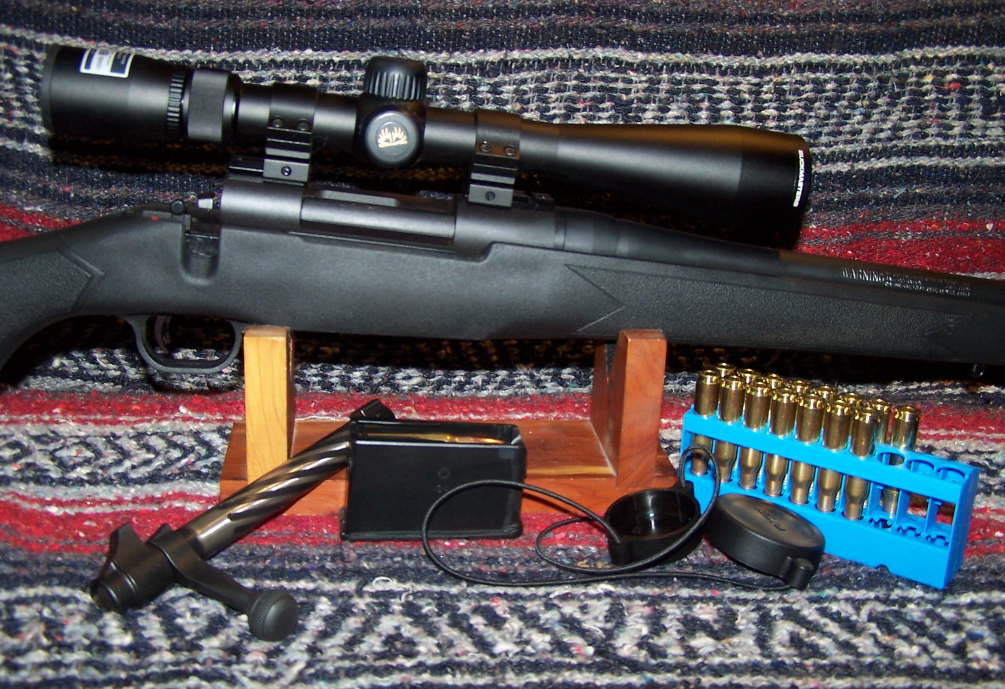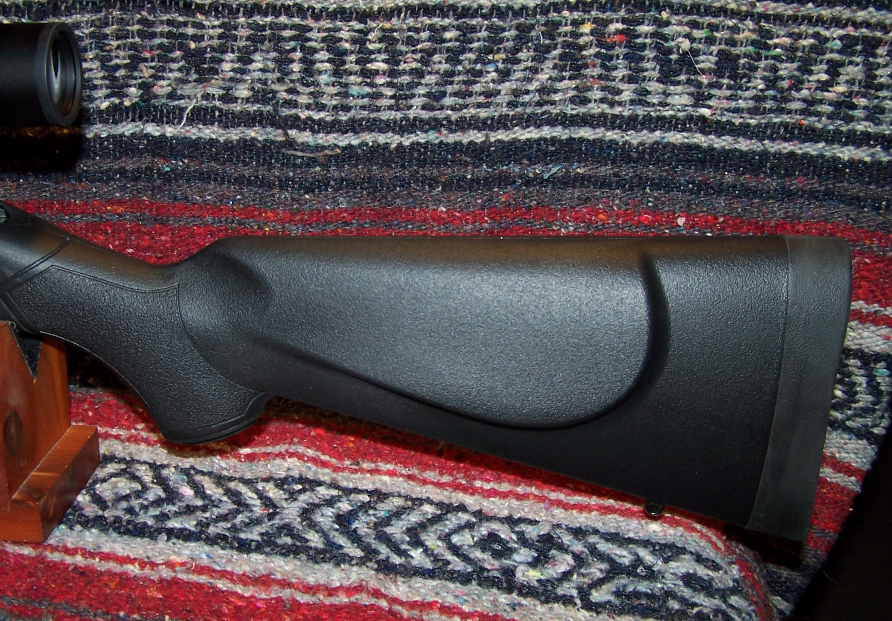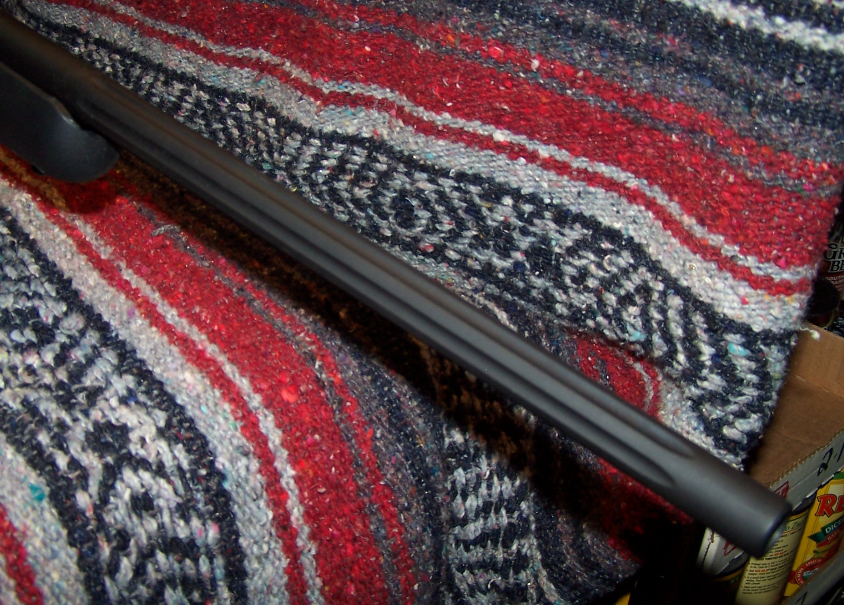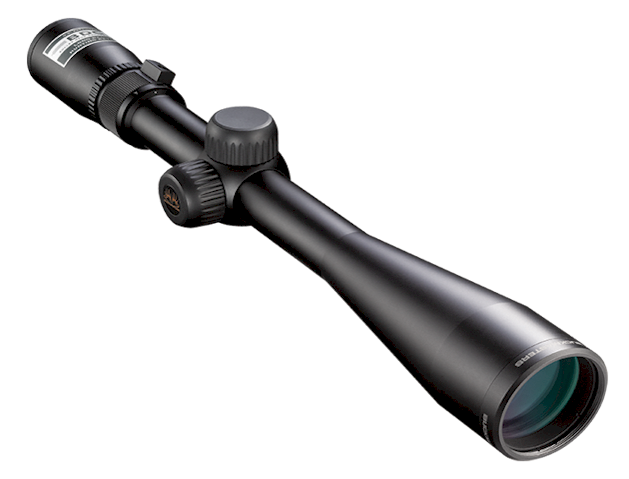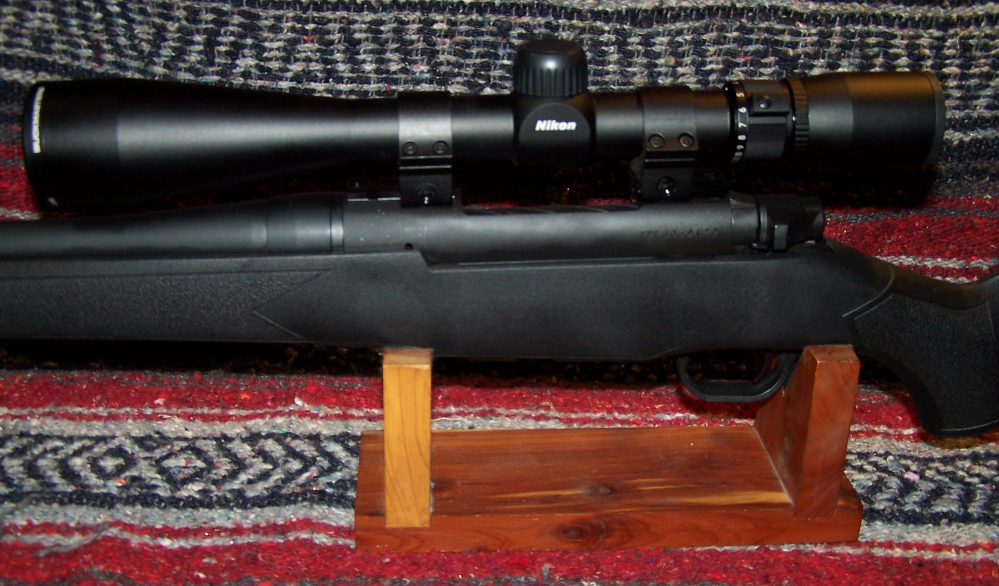The American Revolutionary War (1775–1783) was also known as the American War of Independence, which was an 18th-century war between Great Britain and its Thirteen Colonies that declared independence from Great Britain, and that would eventually form the foundation for the United States of America. People that fought in that war were considered patriots, at least to those who fought for independence, while the British had other terms for them and preferred to hang them rather than look at them. At the beginning of the Revolutionary War, most patriots used firearms from (ironically) Great Britain, as “American” weapons production was lacking. That, of course, did change and long rifles, which were an American design of the 18th century, were produced by individual German gunsmiths in Pennsylvania. These were the rifles of patriots. The French Charleville musket fired a .69 caliber ball at velocities of around 1,000 to 1,200 ft/s (300 to 370 m/s), had an effective firing range of 50 to 75 yards, and a maximum firing range around 300 yd (275 m). The .69 caliber ball was quite capable enough to wreak havoc to life and limb.
In 2015, Mossberg introduced a modern version of the “Patriot” rifle, a bolt-action rifle that would have made many a patriot of yore wish they had one when facing down a line of British troops firing volley after volley. The now common 7.62×51 (.308 Winchester) can shoot a projectile of .30 caliber 168 gr. (11 g) BTHP at velocities from 2,650 ft/s (810 m/s) with 2,700 ft⋅lbf (3,700 J) of energy at the muzzle. The U.S. Army sets its maximum effective range at 800 meters (about 875 yards) while the U.S. Marine Corps has it at 915 meters (1,000 yards even).
After contemplating about the Mossberg Patriot rifle, and after lusting over my shooting companion’s piece, I knew that I would have one eventually. Well, eventually came.
I had written an article comparing two rifles; the Ruger Hawkeye and Mossberg Patriot (https://guntoters.com/blog/2019/01/12/mossberg-patriot-vs-ruger-hawkeye/) in .308 Winchester chambering. The Mossberg Patriot rifle won the coin toss, but the rifle I now have, and will develop a long-term test and evaluation of, was not what I wanted. As the song says, “You don’t always get what you want, but you get what you need” applies here.

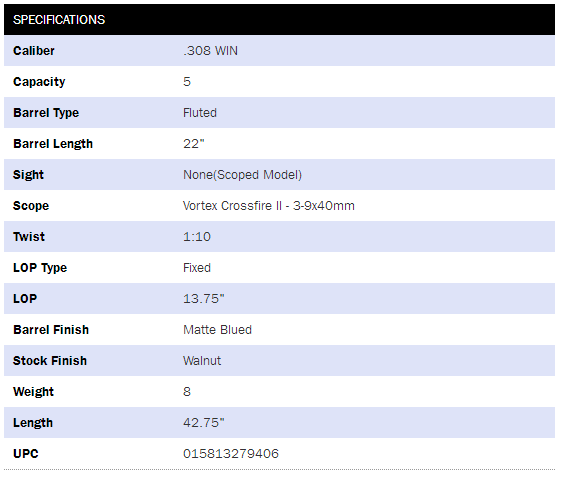
Although the model 27864 does not come with a scope, my LGS just happen to have one with a scope; a Nikon Buckmasters II 4-12×40 BDC. You see, my LGS happens to get in a series of rifles and then sets them up with a scope for deer hunters. It was good timing on my part to be able to get one in my hands. It was also good timing on the part of my LGS to have one on hand, because they never know what I am going to come up with next. By the way, if you happen to be in the Snellville area in Georgia, stop in at Hilltop Pawn. (I know, this was a shameless plug, but I felt that they should be mentioned because they have helped me get the fodder for many of my articles.) Lest I digress further, let’s get back to the Mossberg Patriot.
The black synthetic stock is nicely molded with subtle texturing. The grip and forearm is more highly textured with a pebble pattern that allows a good grip in wet weather. Of course, the stock is synthetic and that means that it can be beaten around the bush without getting beaten up; a bane to those who like wood furniture on their hunting rifles, and I have to admit that I am one of those.
The butt pad is of a material soft enough to buffer some recoil while still allowing a firm pull of the rifle into the shoulder pocket. The 13.75” LOP is near perfect for me (I really like a 14-14.25-inch LOP, but with a few layers of clothing between me and the butt of the rifle, the standard LOP is good enough.
The grip area is not too thick or too thin to be of use, at least for me and my hand. I normally shoot with my thumb alongside the stock anyway, but I still need to reach the safety lever when needed.
The stock incorporates a cheek rest on the left side of the stock. Unfortunately, it is of little use for a left-handed operator like me. However, it does have a purpose in my life. When using a slip-on cartridge holder, the angle of the holder allows me to retrieve spare cartridges from over the top with my right hand a bit easier with the base of the cartridges angled up and toward my face. Some negatives can be turned into positives.
The stock allows for free-floating of the barrel, which is free-floating.
The 22” in matte blue is fully fluted forward of the stock and ends in a nicely recessed-crowned barrel. The fluted barrel advantage over un-fluted barrels is that it helps to keep the weight of the rifle down while providing quick cooling of the barrel. Besides, the fluting really looks neat.
The chamber is meaty and well-fed through a five round detachable magazine. Some, like myself, like drop-box magazine but I am alright with a detachable magazine as long as it works, and this one works very well. The magazine is locked into place via a polymer latch and can be fed from the top without damaging feed lips.
The spiral bolt has a dual-lug locking feature and integrated extractor and ejector. The bolt handle knob is large, heavy, and patterned for positive operation. Some have complained that the bolt seems too loose at the rear of its travel, but I have no such complaint. The bolt locks up as it should and rear travel is limited by the bolt release; a lever that is pushed down to release the bolt from the rifle. As witnessed during the first range session, extraction and ejection are positive with the rate of ejection controlled by the speed of bolt operation. There was no problem expelling a spent case far or near.
The bolt lift is such that there is more than adequate clearance between the eyepiece and the bolt handle.
Atop the receiver is mounted two Weaver bases for mounting an optic. In this case, a Nikon Buckmasters II 4-12×40 BDC was mounted within Weaver rings and then mounted to the bases. The scope was mounted straight and, according to the LGS, the scope was bore-sighted. That statement would be tested at the range.
Nikon Buckmasters II 4-12×40 BDC Scope Features
- Compact riflescope with 4 to 12x magnification and 40mm objective lens.
- Fully multi-coated optical system transmits up to 98 percent of available light.
- Zero-reset turret with spring-loaded adjustment knob; 3.7 inches of eye relief.
- Nitrogen-filled, o-ring-sealed housing for waterproof, fog proof performance.
- BDC reticle; quick-focus eyepiece; measures 14.1 inches.
Having mounted several Nikon scopes, I can attest to their quality. Initially, I had envisioned mounting the Nikon Prostaff 3-9x40mm scope on the rifle since I had one on hand. However, I have used the BDC scope and it is a good, inexpensive scope for the price. I have to admit that I have come too really like an AO (Adjustable Objective) scope, and that may come later. For now, the provided scope fits the bill.
Moving downward a bit, we find a two-position safety lever. Being a left-handed operator shooting a right-handed rifle, the position of the safety is always a concern of mine. With the Mossberg Patriot rifle; however, there is no concern as I can reach the safety lever easily with the thumb of my shooting (left) hand easily. When in the SAFE position, the trigger is inoperative but the bolt can be retracted and removed.
An advantage (in my line of thinking) is that while the weak hand trigger finger operates the go and safety switches, my strong hand operates the bolt, scope magnification ring, and magazine release just fine, thank you. I have accustomed myself to this arrangement, being a cross-eye dominate, right-hand shooter that operates rifles from my left side.
The Mossberg Patriot rifle feels very light when carrying. At about 7 pounds, with scope, it is a very handy rifle to carry around. And, to carry around, two sling mounts are provided for mounting any sling that you wish to mount.
Moving to the go switch, the Mossberg Patriot’s trigger is a LBA user adjustable from 2 to roughly 7 pounds. The trigger pull on this particular unit, out of the box, is a slightly rough 3.7 pounds that I have no intention of touching at this time. The trigger roughness will work itself out the more the rifle is shot.
The overall package is sleek looking with thickness and thinness where they need to be. The rifle feels very good in the hand and the shoulder.
Range Day
While I had some .308 Winchester, I had just received several boxes of PPU 308 Winchester OSP BT 165gr. in and though that this would be a good cartridge to try in the new Mossberg Patriot. The PPU (Prvi Partizan) factory is situated in southwestern part of Serbia, in town Uzice, 200 km away from Belgrade, the capital. PPU manufactures sporting and hunting ammunition and small arms ammunition. This particular cartridge is rated at 2, 675 fps).
Unfortunately, I am limited to 25 yards at my indoor range. But, I can still zero and function check a rifle at that distance. With this cartridge, and according to Nikon’s Spot-On program, a 25-yard zero would result in an impact of +4.25-inches at 100 yards and another near zero (+0.66-inches) at 200 yards or so.
Using http://www.shooterscalculator.com/point-blank-range.php?df=G1&bc=0.406&vi=2675&sh=1.75&ts=8 as a resource, the MPBR (Maximum Point Blank Range) for my near zero (25 yards) provides the approximated values shown below for an 8” target.
- Near Zero: 24 yards
- Far Zero: 251 yards
- Minimum PBR: 0 yards
- Maximum PBR: 295 yards
- Sight-in at 100yds: 3.46″ high
This day; however, I simply want a good zero at 25 yards.
My shooting companion and friend also provided me with some of his hand loads; 150-grain fodder loaded to a more comfortable level than what the PPU was providing me.
Kudos goes to the person at my LGS that bore-sighted the rifle. Nary were an adjustment needed and my first shot of PPU ammunition impacted just left but touching the “X.” The remaining fours shots provided a nice group, but I was still getting used to the rifle, scope, and trigger pull.
I then shot five of the 150 grain fodder at a new POA and was hitting low but centered. I ran another five shots of the PPU and was getting better results, but was still fighting the trigger and trying to work through the recoil.
My final group was five shots in two holes spread about an inch apart. The Mossberg Patriot is definitely capable of better accuracy that I can achieve with it (at this time).
The eye relief (3.7 inches) of the Nikon scope was fine at its lowest setting (4). I increased the magnification to 6 and was struggling to get the correct scope picture. However, I was wearing layers of clothing and found myself trying to crowd the scope with not enough space to do so comfortably. The current scope may stay or go; I haven’t decided which yet.
The trigger seemed to be smoothing out a bit. The trigger on my friend’s Mossberg Patriot feels much smoother and lighter, but he has about 200 or so rounds though his. I’ll re-evaluate the trigger on mine after more rounds are sent downrange.
I must be getting old, as the recoil was bothering me sooner than later. I was just using the stock butt pad and may add a Limb-Saver for the next outing. I think that I got spoiled shooting the MSR 10 with its low recoil.
All in all, I was satisfied with the Mossberg Patriot’s first outing. Not a lot of shots were fired, but I had a good idea of the rifle’s potential. In short, it is a keeper.
So, what do I Think?
I think that the Mossberg Patriot in 308 chambering is a good value for the money. It is, after all, an entry-level hunting rifle with an entry-level scope. By far, it is not a precision rifle, but can obtain good accuracy if the operator does their part.
How the Mossberg Patriot in .308 chamber stacks up against other rifles in its class, I really can’t say. I would rather judge a firearm based on its own merits and this one seems to have some good merits. For an out-of-the-box rifle with only a dab of oil added to the bolt, it did very well and I think that, if you like bolt guns, the Mossberg Patriot may be one worth your consideration.
If .308 Winchester is not your favorite caliber, the Mossberg Patriot comes in many versions and calibers and one or more should fit your needs.
Resource
- Mossberg Patriot Rifles: https://www.mossberg.com/category/series/mossberg-patriot/
- Nikon Buckmasters II 4-12x40mm Scope: https://www.nikonsportoptics.com/en/nikon-products/riflescopes/buckmasters-ii-4-12×40-bdc.html
![]()


